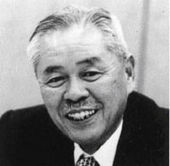Mar 7 2012
What does a manager need to know to undertake a Lean transformation?
This is the second in a series of questions I have received from the Spanish magazine APD (Asociación para el Progreso Directivo). My answer is as follows and, perhaps, your comments will help me make it better:
More than anything the managers need to know what they don’t know. Lean is not a discipline you can master by reading one book on an airplane or taking a one-day course. It is the result of over 60 years of development at Toyota and other companies, built on top of the foundation of mid-20th century manufacturing know-how, with a rich technical and managerial content. Managers do not need to master the technical details, but they need an appreciation for them.
A manager who says “We do Lean, TOC, Six Sigma, and TPM” shows a lack of this appreciation. If you look behind the labels, such a list is akin to Borges’s classification of animals. TOC is about production control; Six Sigma, statistical methods for quality; TPM, maintenance. Lean covers all of these issues and more, from production line design to wage systems and human resource management. It is deeper and broader than all the other programs and does not belong in a list with them.
While showing respect for the technical side of Lean, managers obviously need to master the managerial side, which includes both skills in leading the transformation of an organization to Lean, and the management of daily operations in this organization once the transformation is underway. This ranges from a strategy deployment tool like Hoshin Planning to running start of shift meetings every day and providing career planning for production operators.


Mar 8 2012
What are the key behaviors for Managers to ensure a consistent Lean implementation?
This is the third in a series of questions I have received from the Spanish magazine APD (Asociación para el Progreso Directivo). My answer is as follows and, perhaps, your comments will help me make it better:
Share this:
Like this:
By Michel Baudin • Management • 1 • Tags: Lean, Lean implementation, Management